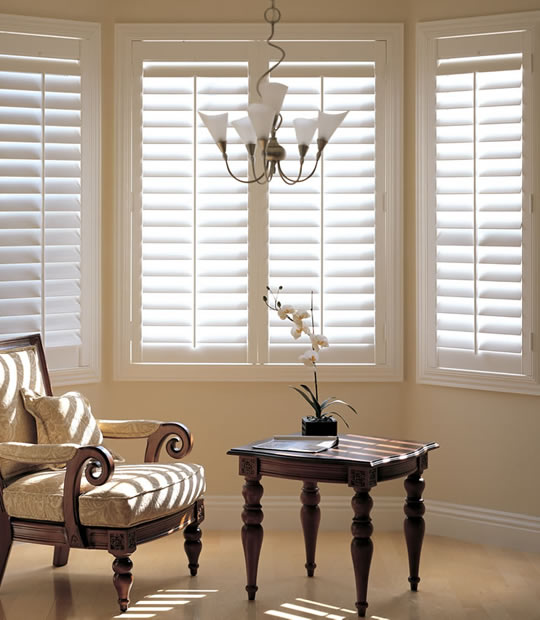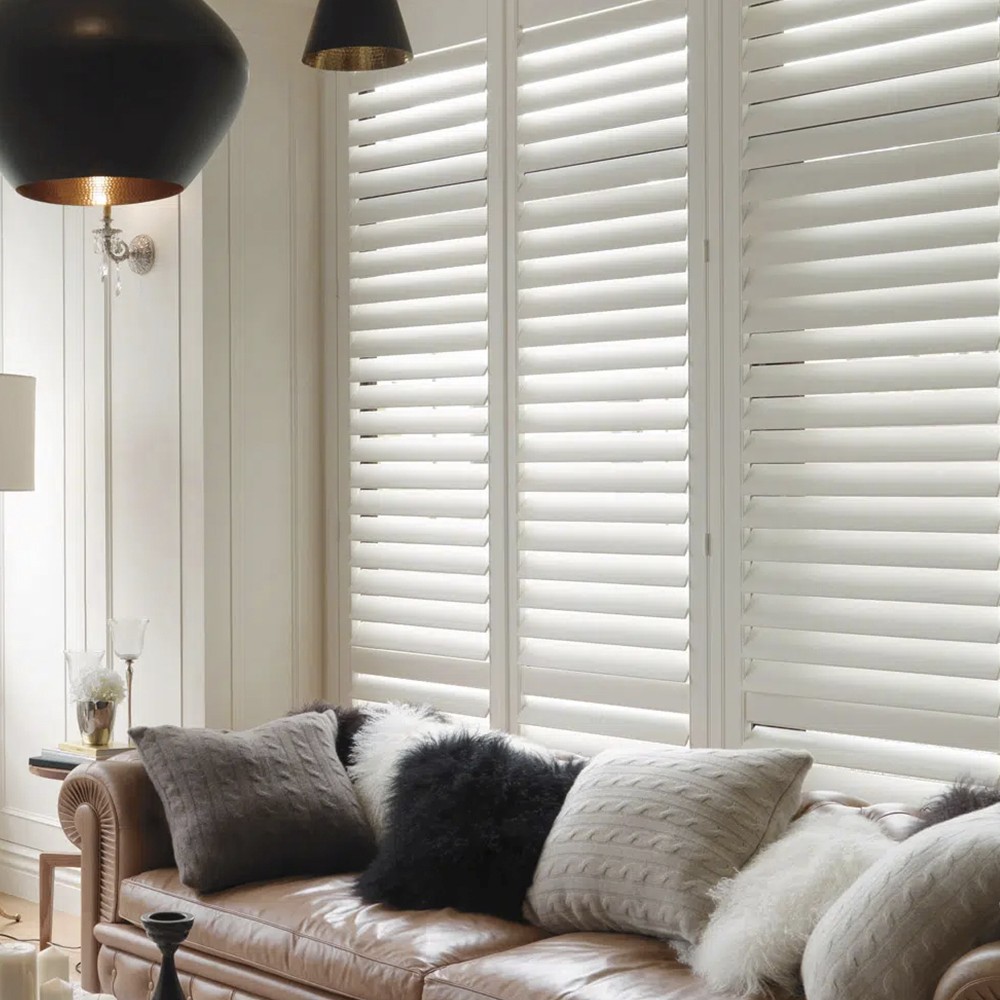Motorized Blinds Phoenix: State-of-the-art Solutions for Your Home
Motorized Blinds Phoenix: State-of-the-art Solutions for Your Home
Blog Article
What to Consider When Choosing Between Blinds and Shutters for Your Windows: An In-depth Analysis of Each Choice's Advantages
Selecting the right home window treatment is a decision that goes beyond mere aesthetics; it includes capability, upkeep, and lasting investment. Blinds present a affordable and flexible option, while shutters supply unparalleled longevity and design. Each choice flaunts distinct advantages that merit careful consideration, especially pertaining to exactly how they align with your home's style and your personal choices for personal privacy and light control. As we explore the crucial differences and advantages of both options, understanding these components will certainly be critical in leading you towards a decision that satisfies your requirements and boosts your space.
Trick Distinctions In Between Shutters and blinds
Frequently, house owners discover themselves pondering between shutters and blinds when selecting home window therapies. Recognizing the crucial differences in between these two options can considerably influence their decision-making process.
Blinds are commonly made from materials such as wood, artificial wood, aluminum, or plastic. Blinds are typically extra cost-efficient, appealing to budget-conscious property owners.
On the other hand, shutters are strong home window treatments that can be custom-fitted to the home window framework. They are typically created from sturdy materials like wood or composite, providing a more durable and irreversible remedy. Shutters supply far better insulation and can enhance the overall energy effectiveness of a home. Additionally, they usually call for even more upkeep and investment contrasted to blinds as a result of their building and installation complexity.

Benefits of Blinds
Blinds provide a versatile and functional solution for house owners looking for reliable home window therapies. One of the key advantages of blinds is their flexibility to numerous styles and preferences.
An additional significant benefit of blinds is their ease of operation. Several modern-day blinds come with easy to use mechanisms, including cordless options and mechanized systems, making them easily accessible for all ages. This benefit is improved by their capability to give exact light control, allowing property owners to quickly adjust the level of sunshine getting in a space.
Blinds likewise offer excellent personal privacy choices, as they can be completely opened, partly slanted, or totally shut, relying on the wanted degree of privacy. They are usually more economical than shutters, offering an affordable service without giving up style or capability. Upkeep is uncomplicated, as the majority of blinds can be cleaned with a basic wipe-down, guaranteeing that they continue to be an appealing attribute in any home for years to come.
Advantages of Shutters
Shutters present a distinctive set of advantages that make them an appealing choice for homeowners seeking trendy and long lasting home window treatments. One of the key benefits of shutters is their remarkable durability - blinds phoenix. Created from durable products such as timber, plastic, or composite, they are developed to hold up against the examination of time and resist damage from UV rays, dampness, and temperature level fluctuations

Shutters also offer boosted privacy and light control. Property owners can easily adjust the slats to accomplish the desired degree of illumination while maintaining personal privacy from the outside. Unlike blinds, which may flex or sag in time, shutters preserve their shape browse around here and performance.
Additionally, shutters can increase the worth of a building (blinds phoenix). Their timeless visual and toughness attract possible purchasers, making them a rewarding investment. In recap, the longevity, power efficiency, privacy control, and potential for increased property worth make shutters an engaging option for home window treatments
Aesthetic Factors To Consider
When choosing window treatments, aesthetic factors to consider play an essential role in enhancing the overall layout and setting of a space. Both shutters and blinds provide distinctive visual characteristics that can match numerous interior styles, from modern to standard.
Blinds commonly provide a streamlined, minimalist look, quickly available in a variety of colors and products. This adaptability allows property owners to collaborate blinds with existing decoration, producing a unified look. Their horizontal or vertical slats can include a modern side, making them appropriate for urban settings.
In comparison, shutters exude a traditional elegance that boosts typical and rustic insides. Their strong structure and adjustable finishes, such as wood discolorations or painted alternatives, stimulate a feeling of timelessness. Shutters can function as a declaration piece, accentuating the home window while supplying an upscale visual.
Inevitably, the choice between shutters and blinds should reflect not just personal design yet additionally the desired atmosphere of the room. By very carefully thinking about exactly how each alternative lines up with the total layout vision, property owners can efficiently enhance their space's aesthetic appeal, making certain an unified and welcoming environment.
Price and Maintenance Variables
When picking in between blinds and shutters for home window therapies,Price and maintenance are critical facets to consider. Blinds are usually extra budget-friendly, with a wide variety of options available at numerous rate points. Basic textile or vinyl blinds can be rather budget friendly, while premium products like timber can raise the expense. Installation is normally uncomplicated, often allowing for DIY strategies, which may even more reduce expenditures.
In comparison, shutters often tend to bring a higher first expense due to their custom production and robust building and construction. Nonetheless, this investment may yield long-term financial savings, as shutters are typically a lot more resilient and call for less constant replacement. They additionally use exceptional insulation, possibly decreasing power costs with time.
Blinds generally need routine cleaning and occasional washing, while shutters can be wiped down with a wet cloth for cleansing, making them less complicated to keep. Inevitably, the choice in between blinds and shutters need to stabilize both first financial investment and recurring maintenance requires to ensure a satisfying return on investment.
Verdict

Blinds provide a economical and flexible solution, while shutters supply exceptional resilience and design.Expense and maintenance are essential aspects to find out here think about when picking in between blinds and shutters for window therapies. Blinds usually need normal cleaning and periodic cleaning, while shutters can be wiped down with a moist cloth for cleansing, making them easier to maintain. Inevitably, the option in between shutters and blinds should balance both preliminary financial investment and recurring maintenance requires to make sure a satisfactory return on investment.
In summary, the choice in between blinds and shutters pivots on different factors, consisting of material structure, design flexibility, and price.
Report this page